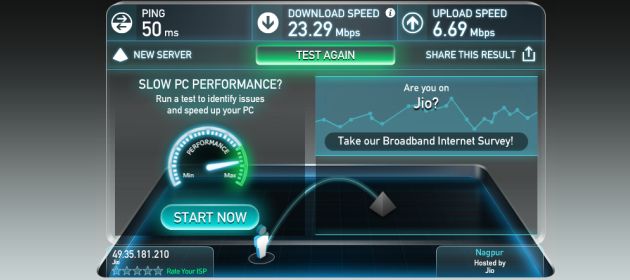SAAS promises zero upfront cost, freedom from maintenance and relief from headaches of updates, and so on.
These are all benefits for customers of SAAS.
What’s in it for providers of SAAS?
Shorter sales cycle is the most obvious benefit. Because buyers don’t need to incur huge licensing costs while signing up for a SAAS solution, SAAS lowers the purchase entry barrier. This often translates to shorter sales cycles for SAAS vendors (provided they’re able to achieve the SAAS multiplier effect).
Note to SaaS vendors: Once you have an appealing msg, start looking for business users with corp. credit cards! http://t.co/2PsnS0d1
— GTM360 (@GTM360) April 16, 2012
But, while the onprem sales cycle can be longer, the vendor gets a big “pot of gold at the end of the rainbow” by collecting license fees for the entire lifetime of the software soon after booking the order. On the other hand, all that a SAAS vendor gets upon booking the order is the first month’s subscription fees. As illustrated below, there’s a big difference between the two numbers.
| ONPREMISE | SAAS | |
| License Fee | $2000 per user (onetime) | N.A |
| Subscription Fee | N.A | $75/user/month* |
| User Count | 1000 users | 1000 users |
| Month 1 Revenue | $2,000,000 (1000*2000) | $75,000 (1000*75) |
*: This is ~1/27th of license fee. This figure is based on anecdotal evidence of SAAS subscription fee being 1/20 to 1/30th of onprem license fee.
2 million dollars versus seventy five thousand dollars. That’s the difference in order booking. That’s a big hit to short term revenues. Which is a big problem for sales leaders measured on quarterly numbers.
Why then are software vendors – IBM and Oracle to name a couple – pushing SAAS so heavily?
I have no inside track into these companies but, from my experience of building and marketing SAAS products during the past 2-3 years, I can hazard an educated guess as to the benefits of SAAS for its providers.
#1. No Piracy
It’s no secret that piracy is still a thing – even in enterprise software.
SAAS can only be used by people registered directly with the product owner. This effectively eliminates piracy of SAAS.
#2. Zero Revenue Leakage
 In the onprem world, the vendor signs a license agreement for, say, 1000 users. Most software products don’t block usage beyond the contracted number of users. Ergo, there’s nothing stopping the customer from busting the cap and adding users beyond the 1000th user mark.
In the onprem world, the vendor signs a license agreement for, say, 1000 users. Most software products don’t block usage beyond the contracted number of users. Ergo, there’s nothing stopping the customer from busting the cap and adding users beyond the 1000th user mark.
In fact, it’s customary for customers of onprem software to keep adding users through the year. Since the software is administered by the customer, the vendor may not even know about “user creep” – users exceeding contracted number of users – at the point of their addition to the system.
On prem vendors typically regularize their license agreements every year by asking their customers to declare the exact number of users at the end of the year. I personally experienced this practice when I was responsible for the rollout of PeopleSoft at one of my former employers. We declared the actual count.
However, not all people / companies may be as transparent. While Microsoft conducts audits – and even raids – on customer premises to expose excess usage of its products, such practices are not very common in the industry. As a result, an onprem vendor loses license fees for the excess users.
User Creep is not possible in SAAS since every user needs to be registered on the infrastructure owned and administered by the vendor (not customer).
Therefore, SAAS virtually eliminates revenue leakage.
#3. Tighter Control of Receivables
When an onprem customer delays payment, the toughest action a vendor can take is to threaten to stop support. This is not very effective because the customer can still continue to use the software.
Besides, I wonder if onprem companies are culturally attuned to actually follow through with their threats to stop service. I say this based on a data point of one: At one of my past employers, a field operations manager wrote a letter to a customer threatening to stop service due to nonpayment of AMC and then signed off the letter with the customary “Thanking you and assuring you of our best service at all times” line!
With cloud software, the vendor can literally turn off the tap if the customer delays payment à la electricity, gas and telecom companies. I know many companies – including some small ones – that actually do that.
#4. Higher CLV
While SAAS is sold for a zero or very low upfront cost, the total fees collected by a SAAS company over the lifetime of the software far exceeds revenues from onprem software. That’s evident from the following illustration.
| ONPREMISE | SAAS | |
| Life of Software | 5 years | 5 years |
| License Fee per User | $2000 | N.A |
| Subscription per User | N.A | $75/month |
| User Count | 1000 users | 1000 users |
| Total License Fee Revenues | $2,000,000 (1000*2000) | N.A |
| Total Subscription Revenues | N.A | $4,500,000 (1000*75*12*5) |
| AMC Rate | 15% of License Fees | N.A |
| Lifetime AMC Revenues | $1,500,000 (0.15*2000000*5) |
N.A |
| Customer Lifetime Value | $3,500,000 |
$4,500,000 |
As against onprem CLV of $3.5M, SAAS CLV is $4.5M, which is 28% higher.
According to common wisdom, vendors like SAAS because it’s a source of recurring revenues. But you’d agree that there’s no fun in earning an MRR of US$ 10 / user / month and waiting for 17 years of recurring SAAS revenues to match onprem license fees of US$ 2000 / user that’s collected at the start of Year 1. The real allure of SAAS is that it has a relatively high MRR (Monthly Recurring Revenue) and, hence CLV.
Props to @asmartbear for highlighting that SaaS companies must stimulate "enhanced usage" to make profits. http://t.co/VC3ypVBbMw
— GTM360 (@GTM360) August 25, 2015
#5. Data
In the onprem world, all customer data stays on the customer’s infrastructure. Whereas in the SAAS model, they reside on the SAAS provider’s infrastructure. This means the SAAS vendor has access to data of multiple organizations. If it chooses to, it can mine the data to gather insights. According to Fortune, both Salesforce and Oracle have announced plans to do so. Nature of insights include:
- Is there a major client that you haven’t heard from in awhile or who has been name-dropping your competitor in email or on social media? It’s time to reach out.
- If you have hundreds or thousands of sales prospects on a list, how do you tell the potential winners from the duds?
- Detect if a competitor is mentioned on an email thread.
Since these insights have commercial value, data offers a potentially new revenue stream for SAAS vendors.
We have some experience with this ourselves: For a Customer Engagement Management platform developer, we spec’ced an Uplift Manager module that has the capability to mine response, conversion rates and other performance metrics of targeted offer campaigns run by different companies to various target audiences. Using the insights gathered therefrom, the module can guide ways to boost the performance of each other’s campaigns in future.
Of course, this would need the opt-in of customers. Going by our experience with the aforementioned Uplift Manager, customers see tremendous value from such functionality and are happy to provide their consent for it.
Will @salesforce mine one co.'s data to deliver insights to another co.? Amazingly, there's no talk of NDA etc. in:https://t.co/cFnPxalwoF
— GTM360 (@GTM360) September 20, 2016
 With so many benefits, is it any surprise that software companies are promoting SAAS so aggressively?
With so many benefits, is it any surprise that software companies are promoting SAAS so aggressively?
On a side note, IT services companies don’t seem to be too enamored with SAAS.
And for a good reason: They suffer a massive loss of billing with SAAS software.
According to the CEO of a midsized IT services company I met recently, implementation of an onprem ERP product requires 5-6 consultants for 12-24 months, which translates to billable efforts of 60 – 144 person months; whereas a SAAS ERP project hardly needs 3-4 consultants for 4-6 months, which generates billable efforts of only 12-24 person months. Going by the averages, that works out to 102 person months for onprem and 18 person months for SAAS. Therefore, the ratio of Onprem to SAAS billing is 5:1. In other words, SAAS has slashed billing by over 80%.
As of now, SAAS has not had a material impact on IT services revenues. That’s because SAAS only constitutes a small fraction of overall software sales. According to McKinsey, “for many leading software developers, SaaS still remains something of an afterthought … only 8 percent of the revenues of the top 100 software companies come from SaaS models”.
But that McKinsey article was published in 2015. Judging by the high decibel announcements made by the IBMs and the Oracles of the software world around their cloud offerings in the past few months, SAAS is likely not an afterthought for leading software companies anymore. If and when SAAS goes mainstream, it can be a disruptive force for the IT services industry.


